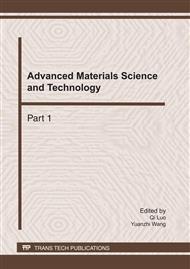p.480
p.485
p.489
p.495
p.501
p.507
p.516
p.522
p.528
Ni Layer Evolution of FeCrAl Substrate Treated by Ultrasonic and Electroplating Methods in Long Term Oxidation at 900°C
Abstract:
The long term oxidation test of FeCrAl substrate treated by ultrasonic and electroplating methods was performed at 9000C in air environment for 100 hours. The purpose of this paper is to show the nickel layer evolution of that substrate. Oxide scale and layer evolution were assessed on specimens using scanning electron microscope (SEM) coupled with energy dispersive X-ray spectroscopy (EDX). The nickel layer disappeared and fully converted to be nickel oxide on FeCrAl treated using ultrasonic and nickel electroplating after oxidation exposure at 9000 C in air for 100 hours. In this condition, the nickel oxide still existed. Not only nickel oxide and Al2O3 were occurred when oxidation exposure at this condition but also Cr2O3 and Fe2O3. The lowest parabolic rate constant was obtained from FeCrAl ultrasonic treatment with SiC for 50 minutes at 1.21 x 10-4 mg2mm4h-1, and FeCrAl ultrasonic treatment with Al2O3 for 30 minutes at 1.15 x 10-4 mg2mm4h-1. The lower parabolic rate constant indicated the higher long time to failure of the FeCrAl substrate.
Info:
Periodical:
Pages:
501-506
Citation:
Online since:
January 2011
Keywords:
Price:
Сopyright:
© 2011 Trans Tech Publications Ltd. All Rights Reserved
Share:
Citation:


